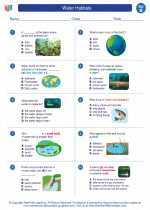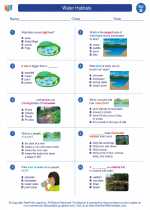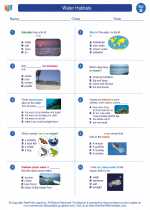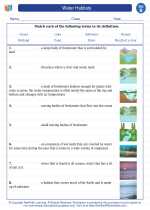Microscope
A microscope is a scientific instrument used to magnify and study tiny objects that are not visible to the naked eye. It is an essential tool in the fields of biology, chemistry, geology, and medicine, allowing scientists to observe and analyze the structure and behavior of cells, microorganisms, and other small specimens.
Parts of a Microscope
- Eyepiece: Also known as the ocular lens, the eyepiece is the part you look through to view the specimen.
- Objective Lens: The objective lens is the primary lens that magnifies the specimen. Microscopes usually have multiple objective lenses with varying magnification levels.
- Stage: The stage is the platform where the specimen is placed for observation.
- Light Source: Microscopes may have built-in illumination or require an external light source to illuminate the specimen.
- Focusing Knobs: These knobs are used to adjust the focus of the microscope, ensuring a clear image of the specimen.
- Diaphragm: The diaphragm controls the amount of light passing through the specimen, helping to optimize the image quality.
Types of Microscopes
There are several types of microscopes, each designed for specific purposes:
- Compound Microscope: This type of microscope uses multiple lenses to magnify the specimen, making it suitable for viewing cells and other small structures.
- Stereomicroscope: Also known as a dissecting microscope, this type provides a 3D view of larger specimens and is commonly used in dissections and assembly of small parts.
- Electron Microscope: Electron microscopes use beams of electrons to magnify specimens, allowing for extremely high magnification and resolution, making it ideal for studying the ultrastructure of cells and nanoscale objects.
Using a Microscope
When using a microscope, it's important to follow these steps for proper observation:
- Place the specimen on the microscope slide and secure it in place.
- Adjust the illumination and diaphragm to achieve optimal lighting.
- Start with the lowest magnification objective lens and focus on the specimen using the coarse and fine adjustment knobs.
- Once the specimen is in focus, you can switch to higher magnification lenses for more detailed observation.
- Handle the microscope with care and return it to its proper storage after use.
Study Guide Questions
- What are the essential parts of a microscope and their functions?
- Describe the differences between a compound microscope and a stereomicroscope.
- Why is proper illumination important when using a microscope?
- Explain the process of focusing on a specimen using a microscope.
- Discuss the significance of electron microscopes in scientific research.
Understanding the principles of microscopy and the proper use of microscopes is crucial for students and scientists in various fields of study. Mastery of this topic will enhance one's ability to conduct detailed and accurate observations of microscopic specimens.
[Microscope] Related Worksheets and Study Guides:
.◂Science Worksheets and Study Guides Second Grade. Water Habitats
Study Guide Water Habitats
Water Habitats  Activity Lesson
Activity Lesson Water Habitats
Water Habitats  Worksheet/Answer key
Worksheet/Answer key Water Habitats
Water Habitats  Worksheet/Answer key
Worksheet/Answer key Water Habitats
Water Habitats  Worksheet/Answer key
Worksheet/Answer key Water Habitats
Water Habitats  Worksheet/Answer key
Worksheet/Answer key Water Habitats
Water Habitats  Vocabulary/Answer key
Vocabulary/Answer key Water Habitats
Water Habitats  Vocabulary/Answer key
Vocabulary/Answer key Water Habitats
Water Habitats 

 Activity Lesson
Activity Lesson
 Worksheet/Answer key
Worksheet/Answer key
 Worksheet/Answer key
Worksheet/Answer key
 Worksheet/Answer key
Worksheet/Answer key
 Worksheet/Answer key
Worksheet/Answer key
 Vocabulary/Answer key
Vocabulary/Answer key
 Vocabulary/Answer key
Vocabulary/Answer key

The resources above cover the following skills:
LIFE SCIENCE (NGSS)
Biological Evolution: Unity and Diversity
Students who demonstrate understanding can:
Make observations of plants and animals to compare the diversity of life in different habitats[Clarification Statement: Emphasis is on the diversity of living things in each of a variety of different habitats.] [Assessment Boundary: Assessment does not include specific animal and plant names in specific habitats.]